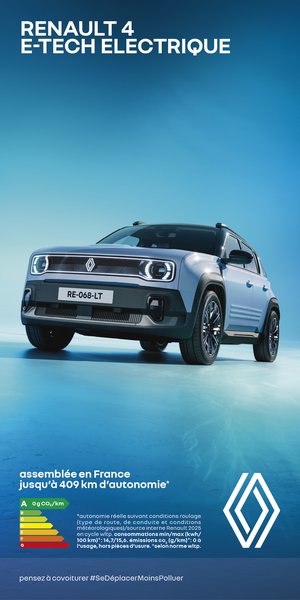Politique Internationale — By way of introduction, it’s worth recalling what the Automobile Club de l’Ouest (ACO) is...
Pierre Fillon — Quite simply, a benchmark in motor sport. The ACO, through the Automobile Club de la Sarthe, the original association, was the driving force behind the organization of the first Grand Prix in history, in 1906. At the time, the race took place on a closed road – a real novelty, as competitions had previously not interrupted traffic. Hence the frequent accidents. Today, the ACO rests on three pillars. The first is the endurance pyramid, whose flagship is the World Endurance Championship, with the 24 Hours of Le Mans as its high point, complemented by seven other major events. The second pillar refers to the club itself and its 40,000 members, with a range of services to support drivers on a daily basis, such as safety training and eco-driving. Enthusiasts are not left out, with a large section dedicated to classic vehicles. Finally, the third pillar covers the operation and management of the Le Mans circuit, the scene of numerous events in both motor sports and motorcycling.
P. I. — For a long time, to say the least, the fields of sustainable development and motor racing were far apart. When did they start to come together?
P. F. — For longer than you might think. With the first oil crisis, in 1973-74, motor sport leaders realized that they had to act. At the time, the notion of preserving the planet was not as prevalent as it is today, but the soaring price of hydrocarbons meant that decisions had to be made. So regulations evolved to lower fuel consumption thresholds during races. At the same time, manufacturers began innovating to make endurance cars more economical. This is one of the differences with Formula 1, which came much later in this field. I’d like to take this opportunity to remind you that racing is a world that directly benefits the automotive industry in general. Major advances – which have become the norm – such as fog lamps and disc brakes, were tested for the first time in racing. In the case of lights, it was even the 24 Hours of Le Mans that prompted these advances: drivers said they were bothered by the night-time fog that was likely to envelop a small creek crossed by the track. On another essential front, the teams have made progress in terms of motorization. Like Audi, in the 2000s, with its direct injection system, which delivers fuel directly to the cylinders instead of the more energy-hungry traditional fuel rail.
P. I. — At that time, hybrids had not yet taken root in endurance racing...
P. F. — We were not too far off the mark, since the pace began to pick up in the early 2010s. Between 2012 and 2015, progress has been particularly eloquent. At Le Mans, in the LMP1 top class – the highest-performance prototypes (now classified under the Hypercar class – editor’s note) – hybrids are becoming the norm for all the major teams. A few figures help to put the benefits into perspective: before the arrival of the hybrid engine in endurance racing, for a 45-minute stint at an average speed of 220 km/h, fuel consumption could exceed 120 liters. With the hybrid engine, consumption is down to 42 liters – the threshold claimed by Toyota – thanks to the energy recovered from braking and exhaust, which feeds the battery first. Another very concrete figure: again at Le Mans, just one lap of the track driven with a hybrid rather than a combustion engine results in energy savings equivalent to the preparation of 100 breakfasts. I mentioned 2012 because, since that year, no overall victory in the 24 Hours has escaped hybrid technology (with a first success for Audi – editor’s note). As of 2015, we’re starting to think very seriously about vehicles capable of producing zero emissions. And progress continues to be made: since 2022, the fuel supplied by TotalEnergies to all cars at Le Mans has been 100% biofuel, produced exclusively from plant residues.
P. I. — You mentioned the rise of the hybrid vehicle. Does this mean that a 100% electric endurance car isn’t on the cards?
P. F. — Let’s go back to the 45-minute stint at an average speed of 220 km/h – the figure that forms the basis of a car’s performance at Le Mans. The fact is that all-electrics don’t allow this kind of performance. In concrete terms, the vehicle would have to stop every 20 minutes to recharge. The pace of the race would be completely different. What’s more, the battery would weigh a lot. Yet weight is the enemy par excellence in racing: teams are constantly trying to lighten the car. That’s not to say that hybrids are the be-all and end-all. In endurance racing, we’re already working on the next generation, which is hydrogen.
P. I. — Can we really say that hydrogen represents the future of endurance racing?
P. F. — The date has already been set: from 2028, the top class will be open to manufacturers wishing to compete with hydrogen technology. Admittedly, this deadline has been slightly delayed (the date was initially scheduled for 2026 – editor’s note) due to the technological calendar, in addition to interruptions linked to Covid. As early as 2018, a “hydrogen” working group was set up within the ACO, enabling us to measure the progress made. A group like BMW began by working on injecting hydrogen into a combustion engine. At the same time, we’ve seen the emergence of two new technologies, one leading to gaseous hydrogen, the other to liquid hydrogen, with the various players keen to test both processes. As time goes by, the results are more and more convincing, whether it’s the Alpenglow Hy4 (for Renault Group’s Alpine brand) or, of course, the H24EVO. We know this prototype well, as it is being developed as part of the “MissionH24”, a program run jointly by the ACO and the H24 Project; this second entity being an extension of the Green GT company which is well known for its work on hydrogen propulsion. Compared with our first prototype, the LMPH2G, the H24EVO brings significant improvements. Admittedly, we’re still at the demonstration stage, but we can already confirm that thermal or electric hydrogen will rival conventional combustion.
P. I. — Is hydrogen the quintessential sustainable motor sport?
P. F. — First and foremost, it’s important to remember that we work with green hydrogen (the electrolysis process using electricity from renewable sources – editor’s note) and not grey hydrogen (using fossil fuels – editor’s note). Secondly, we are exactly on this trajectory of zero CO2 emissions. Finally, we’re at the heart of
an ecosystem that aims to reduce our ecological footprint at every
level. For example, Michelin tires are nothing like the products we supplied just a few years ago: emissions during their manufacture have fallen by 46%.
P. I. — Are motor racing fans and the general public aware of the transformation of the discipline? And if so, do they support it?
P. F. — They know the scale of the changes. All the more so as they are involved in the process. The responsible, environmental and social (RSE) policy adopted by the ACO calls for a 30% reduction in CO2 emissions from the 24 Hours of Le Mans by 2030. Of the 96,000 tonnes of carbon produced by the event (during one week – editor’s note), only 1.4% is due to the race itself. In other words, the cars produce no more carbon than a major sporting event at the Stade de France, for example. Still at Le Mans, 70% of emissions come from spectators, including travel and the many ways in which they consume. To reduce this footprint, the ACO has launched a number of joint initiatives. The “green ticket” is one of them. Launched in 2022, it is gradually gaining momentum (7,000 beneficiaries in 2023, 10,000 in 2024). The principle is simple: a 10% reduction on the entrance ticket is granted on condition that the user comes to the site by low-carbon means (hybrid or electric vehicle, train, tram or bicycle...). We are also stepping up our educational initiatives, such as the Hydrogen Village, which enables people to familiarize themselves with new motorization technologies.
P. I. — How do you explain the fact that Formula E (electric Formula 1) isn’t developing as quickly as expected?
P. F. — Things often need time to settle in. One of the great things about Formula E is that the races take place in the city, in an environment that can quickly become spectacular. It’s also worth bearing in mind that there are significant costs involved in organizing a race in an urban environment. What’s more, the faster the cars go, the more stringent the safety standards will be, given the proximity of housing. Formula E must therefore take these constraints into account. The issue of noise is also a particularly acute one: in Formula 1, fans love the sound of roaring engines, a dimension that the switch to electric power will inevitably erase. This is not a trivial issue. Finally, the lack of interest in the United States doesn’t help either: while Formula E has made its mark in Europe, interest across the Atlantic remains low. This can be explained by a cultural factor: in America, motorsport is first and foremost a show, with all that this implies in terms of presentation. Electrics have not yet reached that stage.
P. I. — Motorsport has its opponents. Would you say that recent innovations have been able to overcome the reluctance of even a small fraction of these detractors?
P. F. — First and foremost, motor sport has a huge following. We saw this clearly during Covid: millions of spectators were deprived of their favorite show, and they came back in droves once the health crisis had subsided. There’s no denying the uproar among certain environmental movements. On the other hand, we do not agree with those who advocate the outright disappearance of the automobile. This means of locomotion is indispensable, synonymous in particular with freedom. As for competition, making technology more virtuous, as we are doing, more than justifies its continued existence.
P. I. — We could have started with this: where does your passion for cars come from?
P. F. — I was born in Le Mans, with a grandfather who was born in 1900 and was himself an enthusiastic racing fan: in fact, there was talk of him taking part in the 1923 24 Hours, but my grandmother was against it. You can’t really blame her: back then, people raced without helmets and it was a dirt track. Later, I swung between two vocations: being a racing driver – I had posters of great champions in my bedroom – or becoming a doctor. My parents clearly preferred the latter! I practiced as an ophthalmologist for thirty years. But I never turned my back on cars: in particular, I forged links with a racing team from Sarthe, Dams (co-founded in 1988 by René Arnoux and Jean-Paul Driot – editor’s note) and gradually entered the racing ecosystem. My first steps within the ACO date back to the 2000s, with increasing responsibilities during the 2010s, culminating in the position of President in 2012, after having been duly trained by my predecessor.
P. I. — Which edition of the 24 Hours did you prefer?
P. F. — One of the great things about the 24 Hours of Le Mans is that no two races are alike. I’m beginning to have a bit of experience, having attended every edition since 1966! The event is a series of sagas, with the Ford-Ferrari duel, the Porsche epic, the arrivals of Matra, Renault, Peugeot... The list goes on. I’m not forgetting a few acts of bravura, such as in 1969, when Jacky Ickx walked to his car (contrary to the usual practice, when drivers run to the start – editor’s note).



















